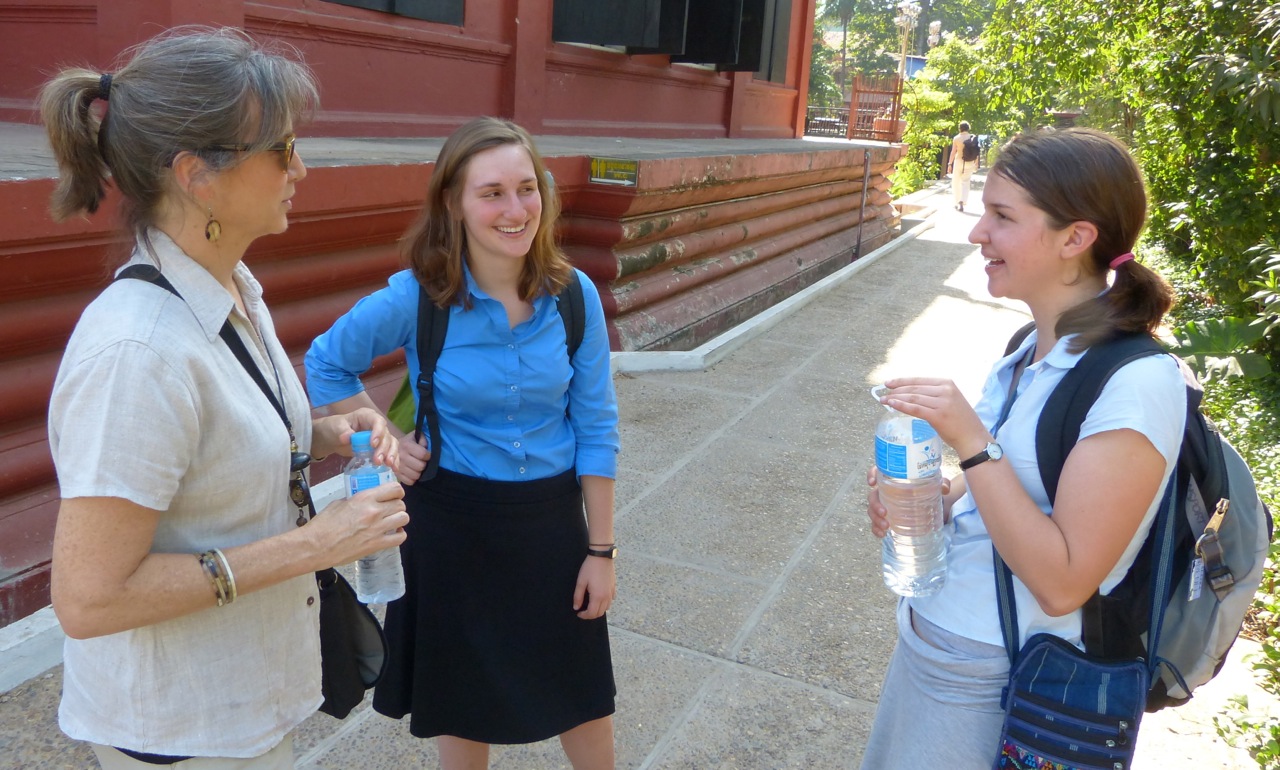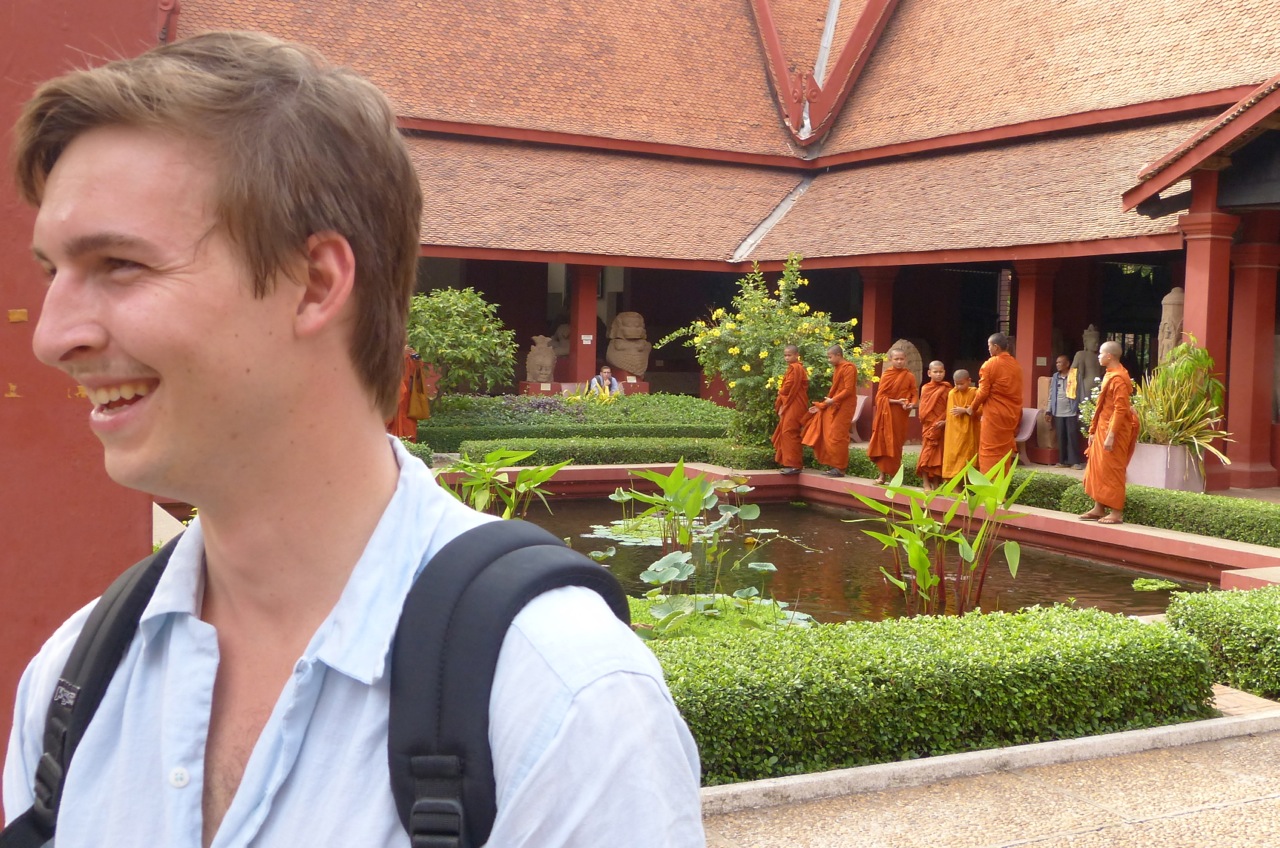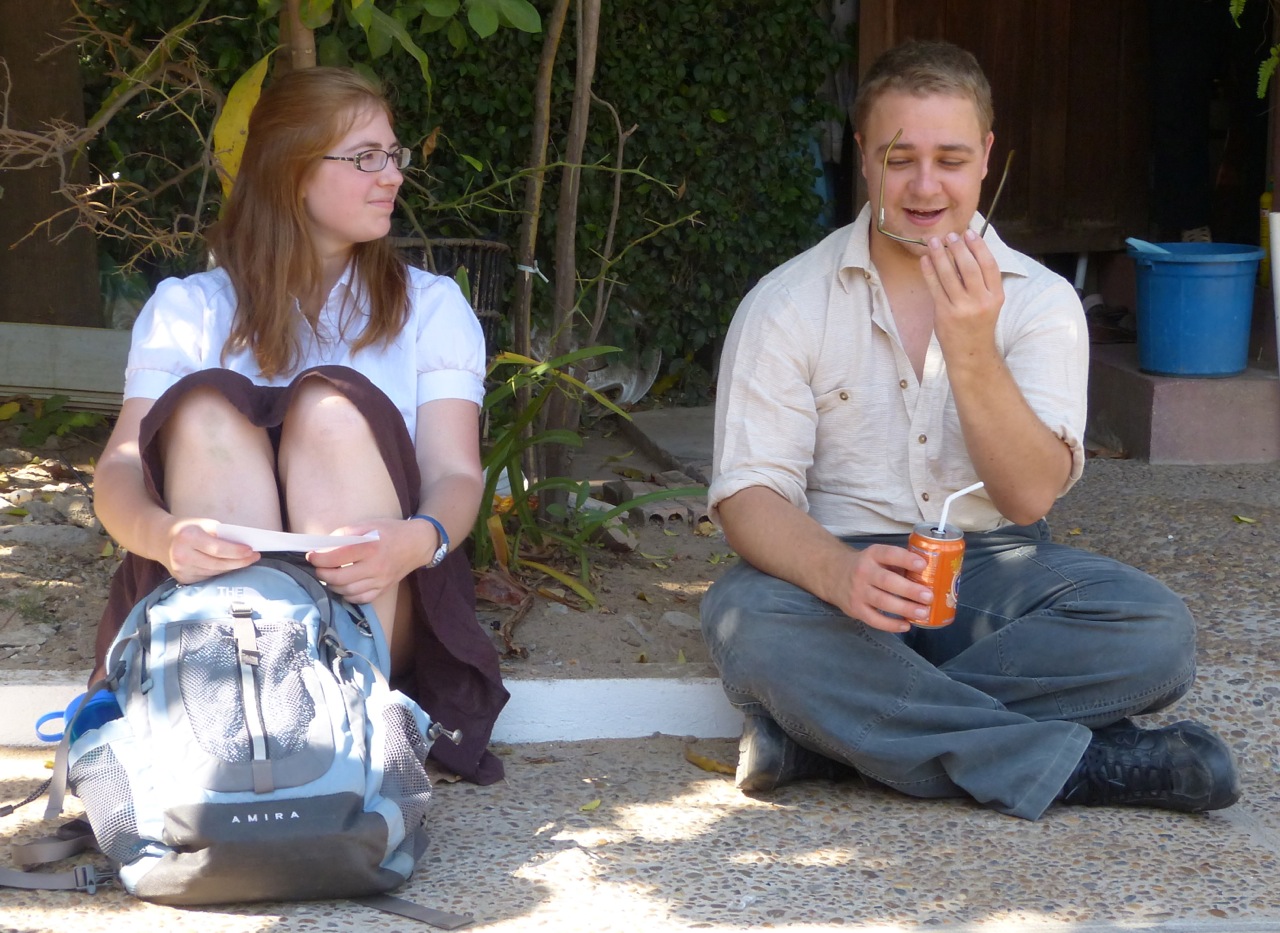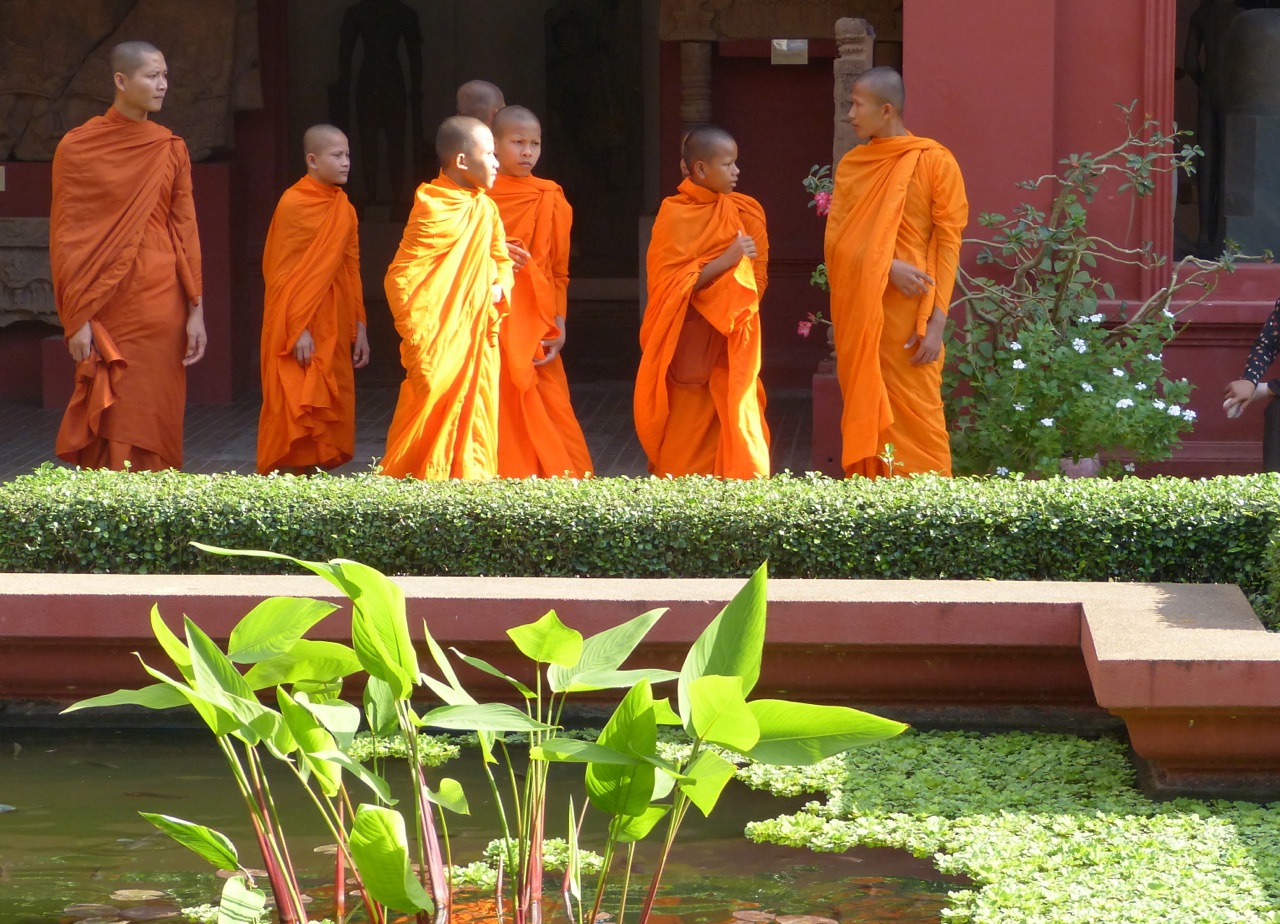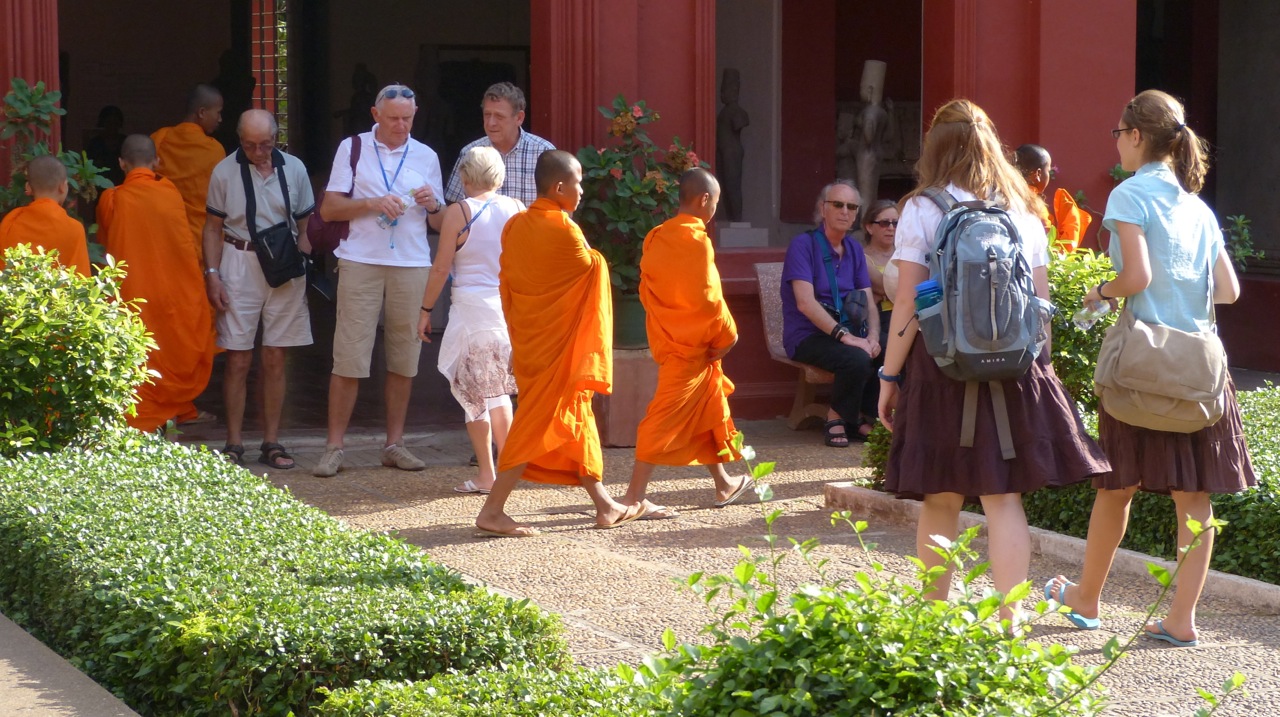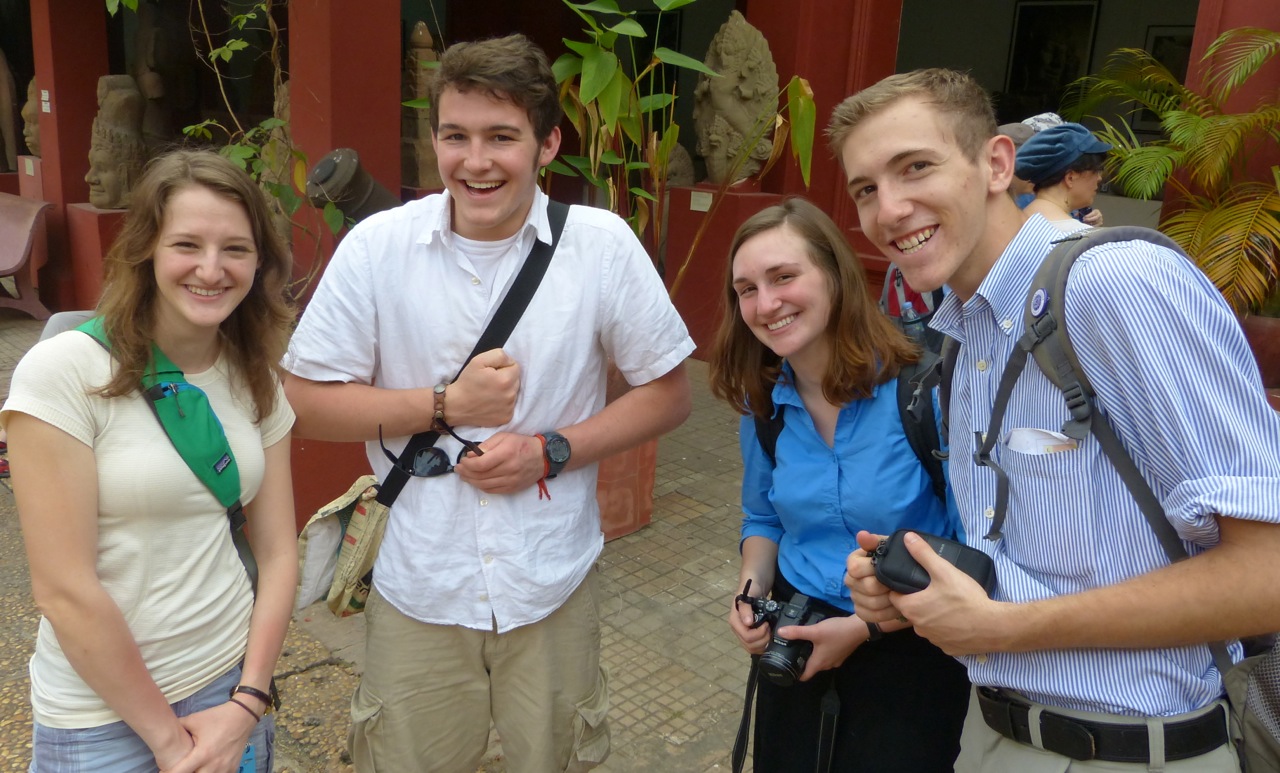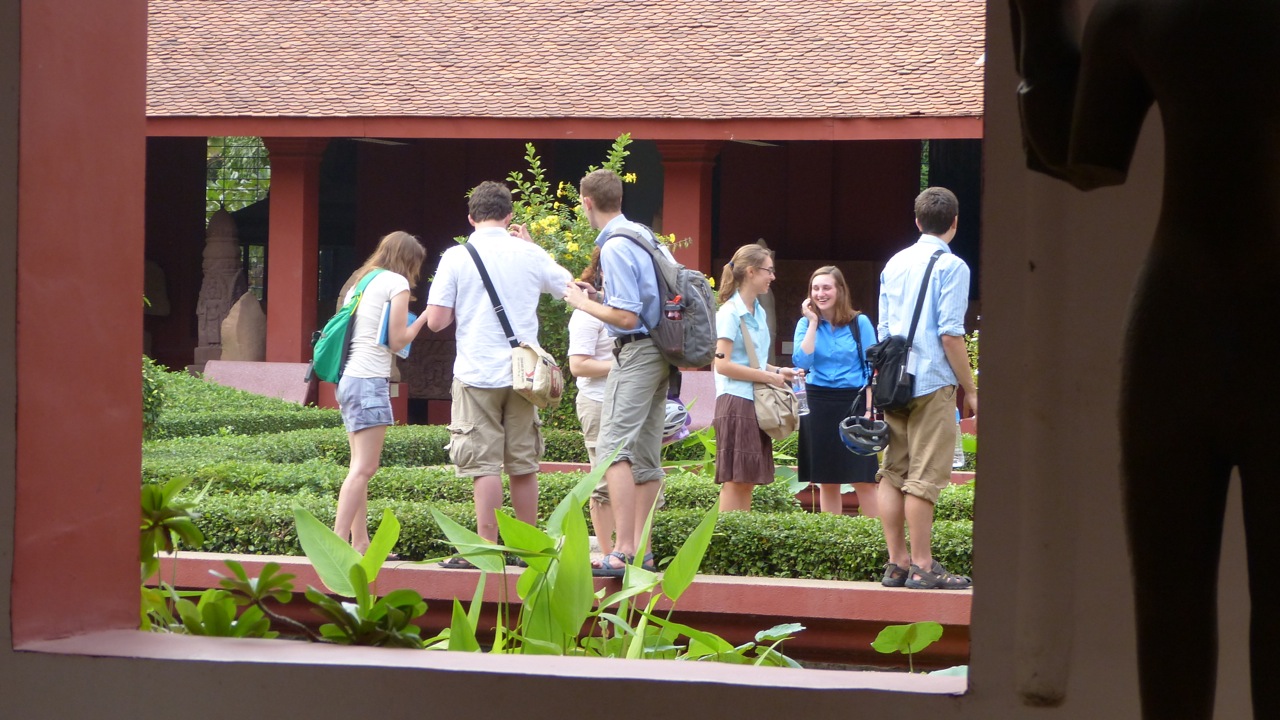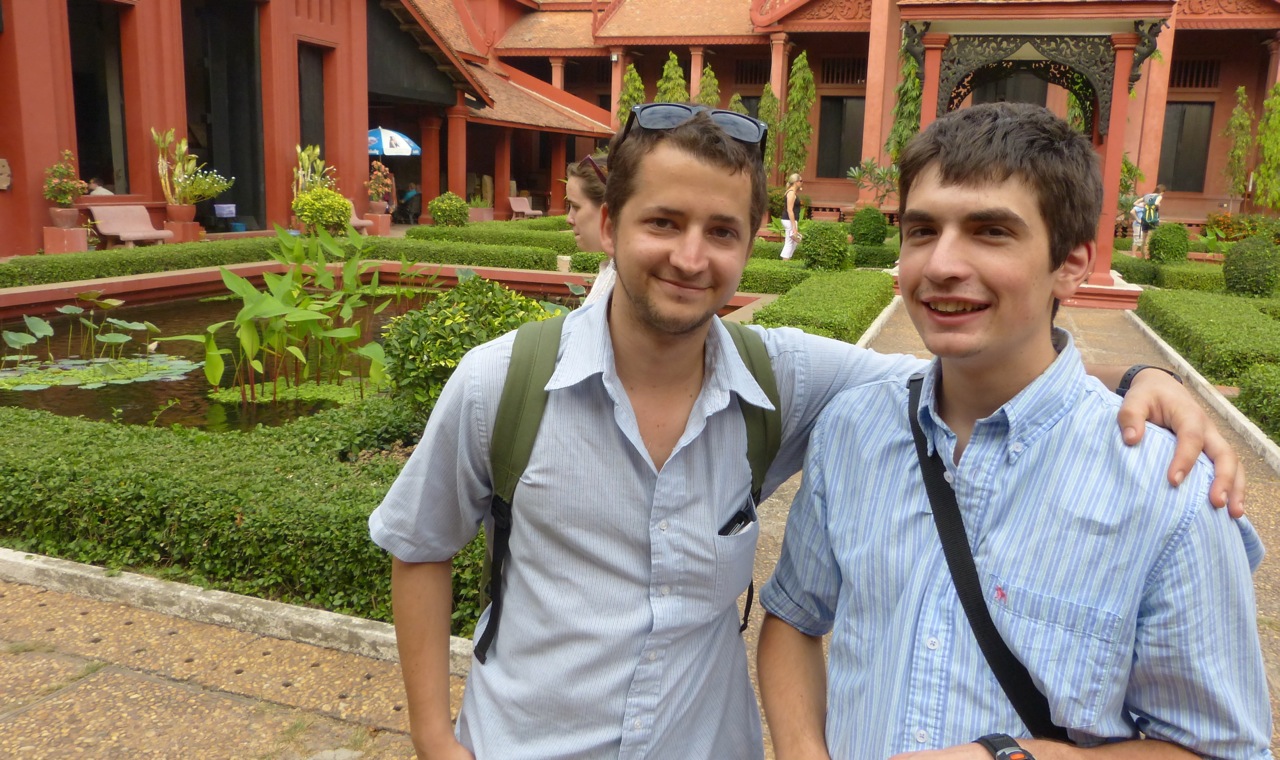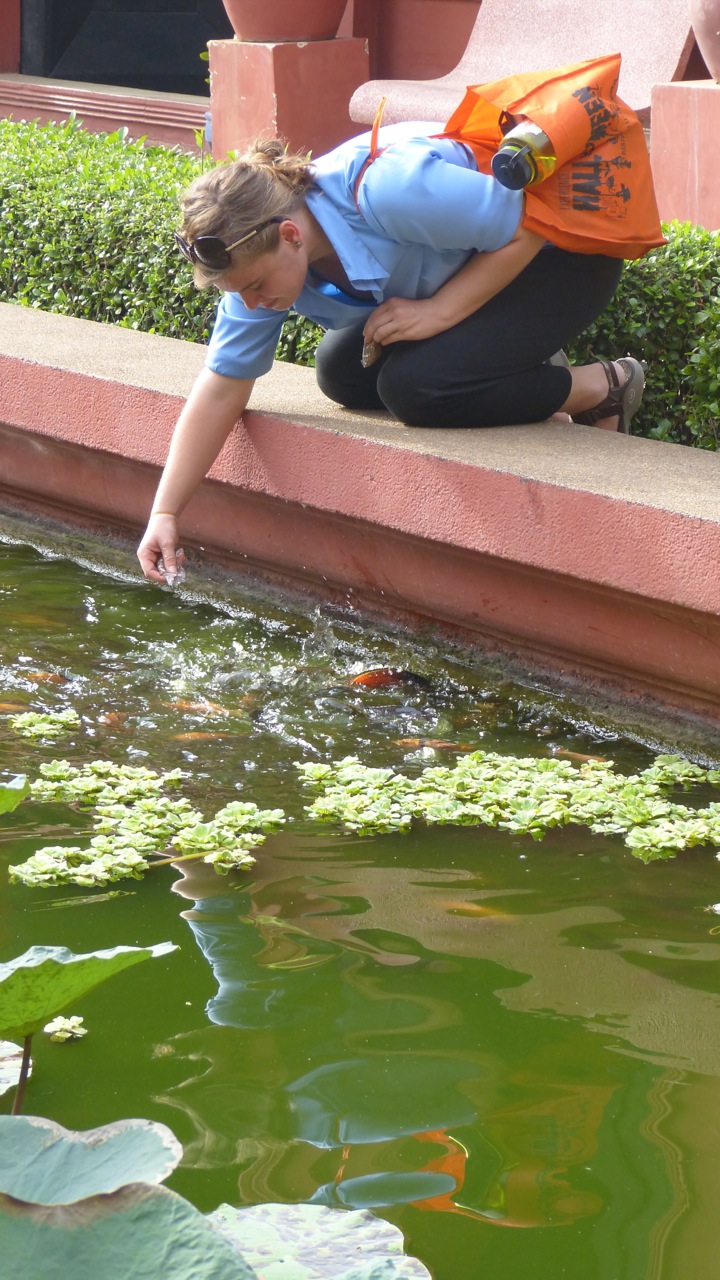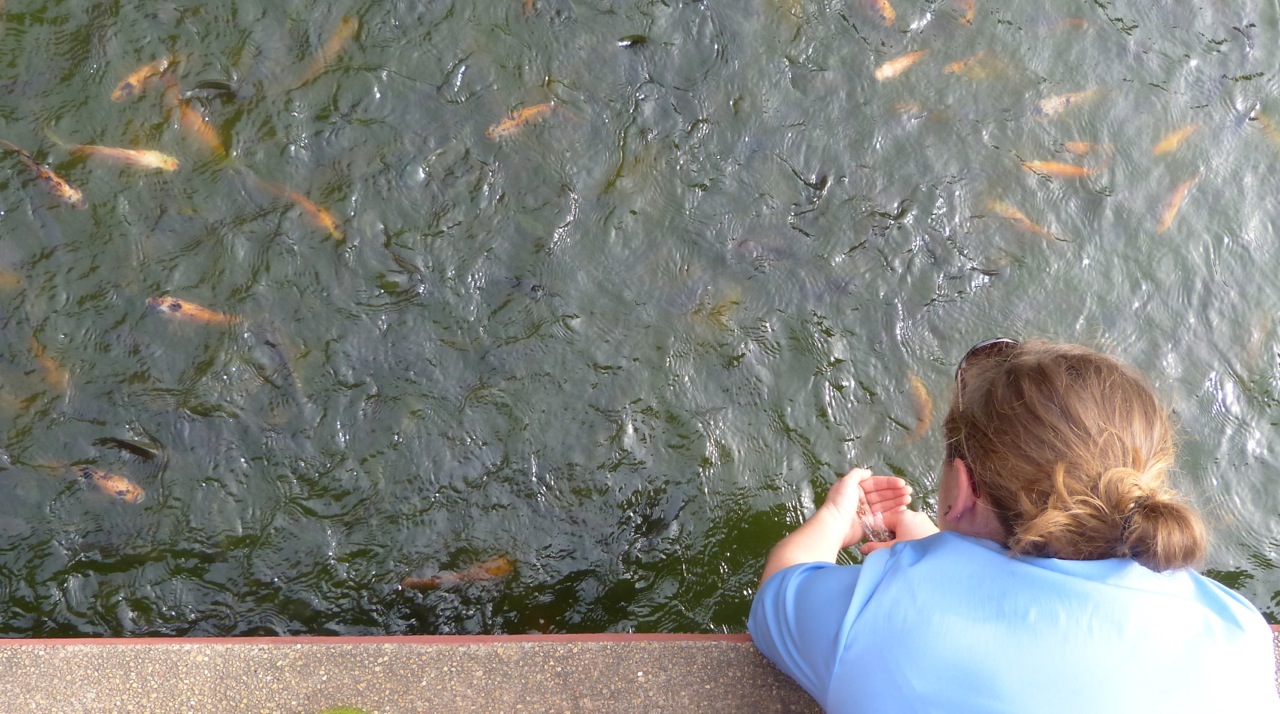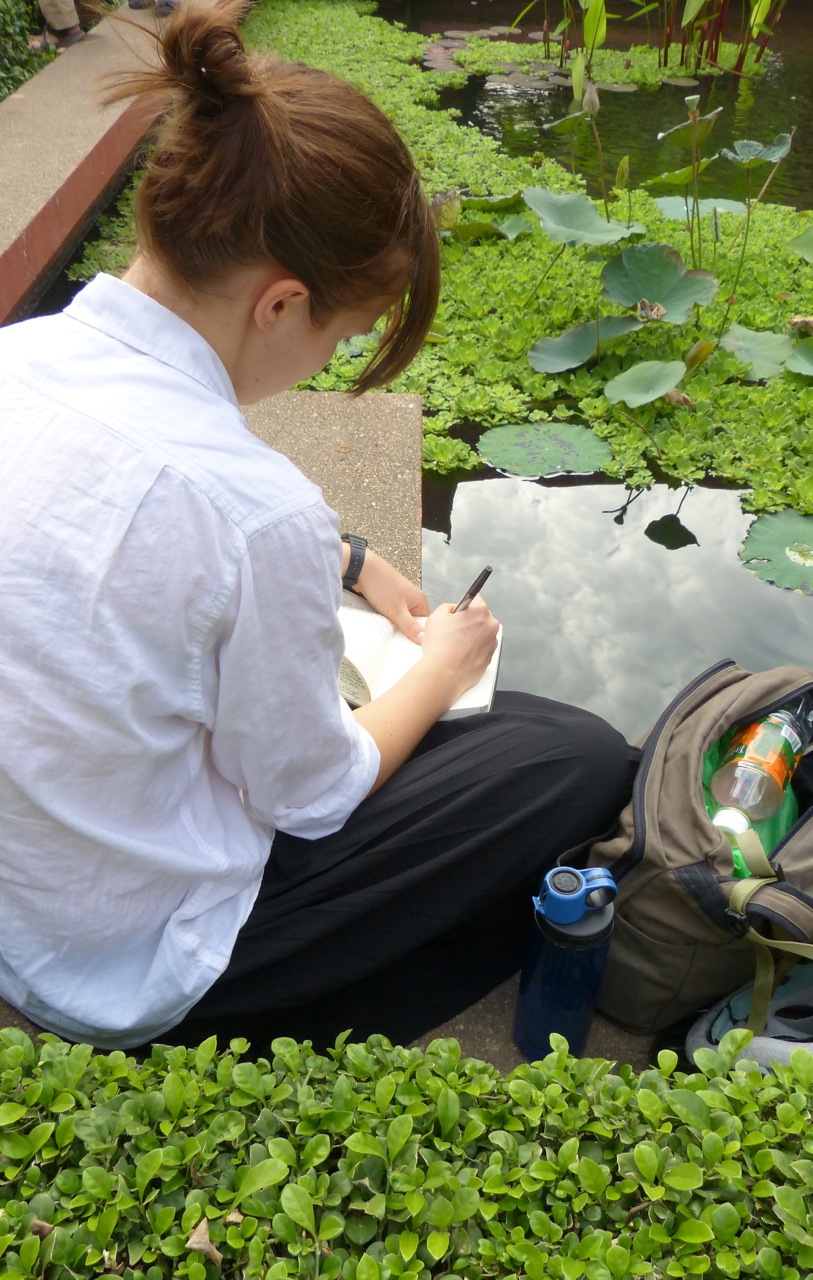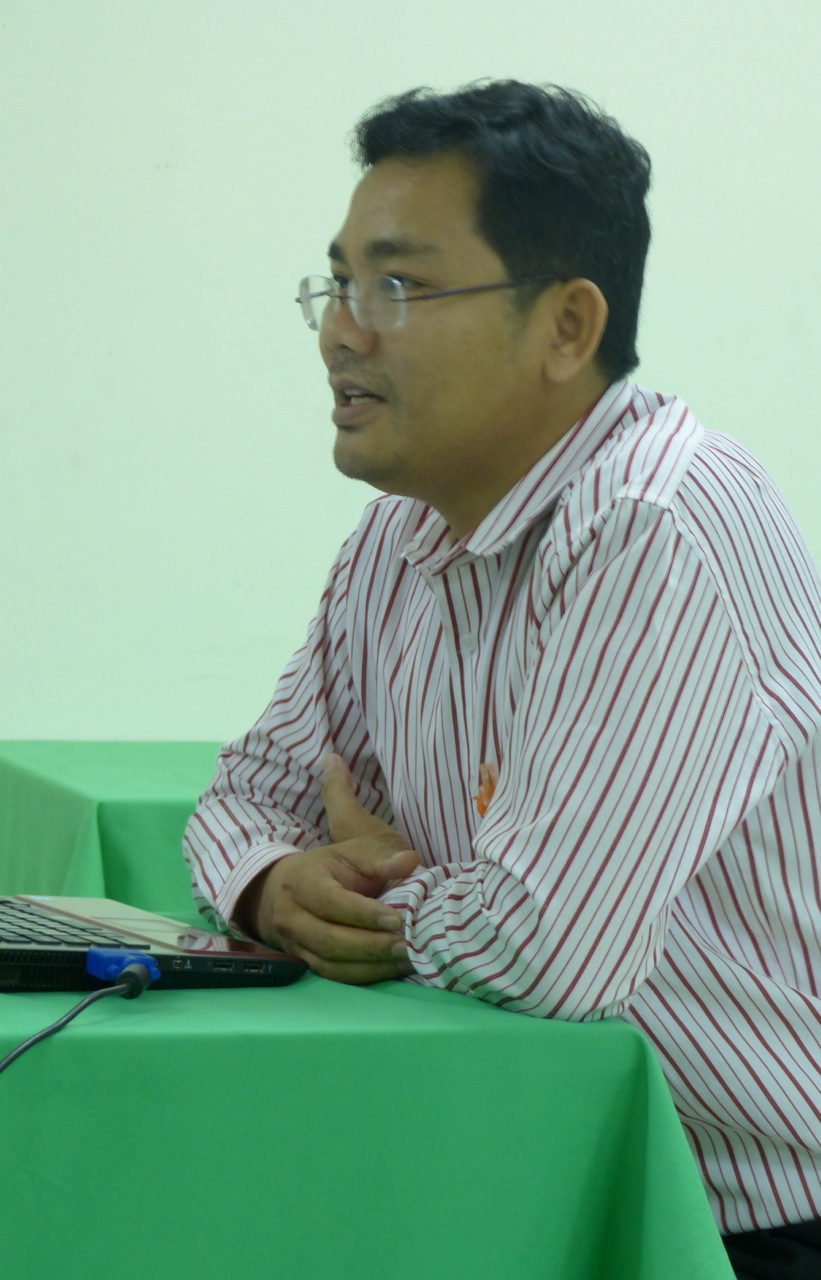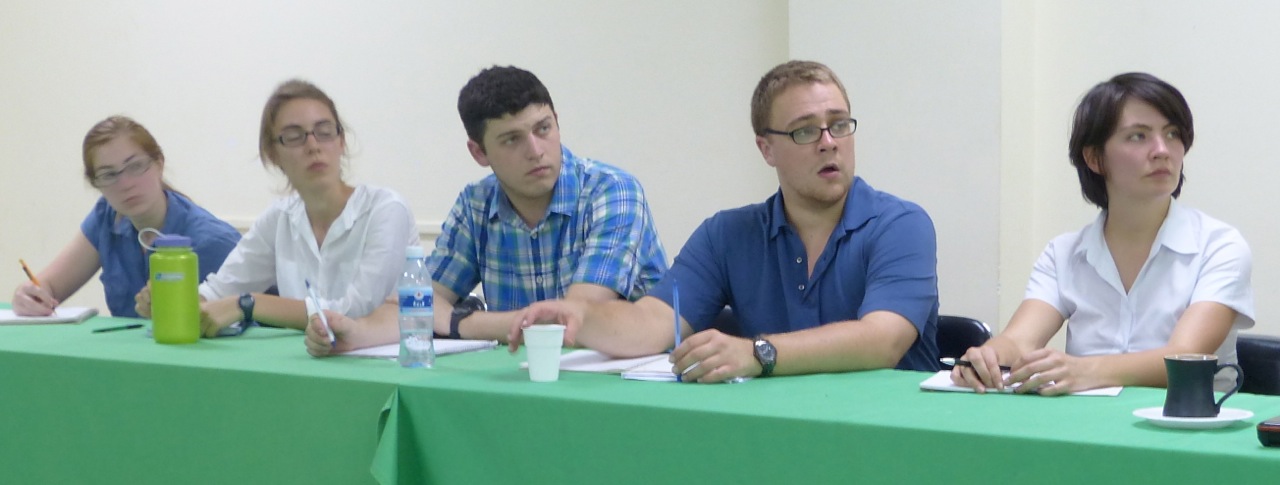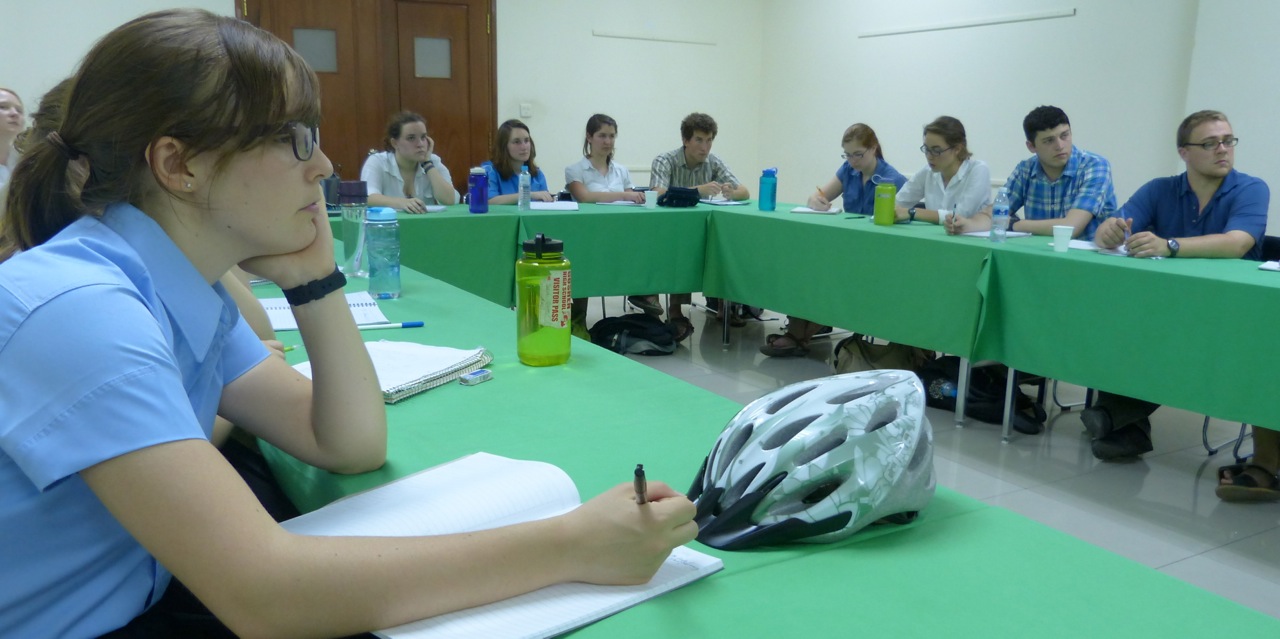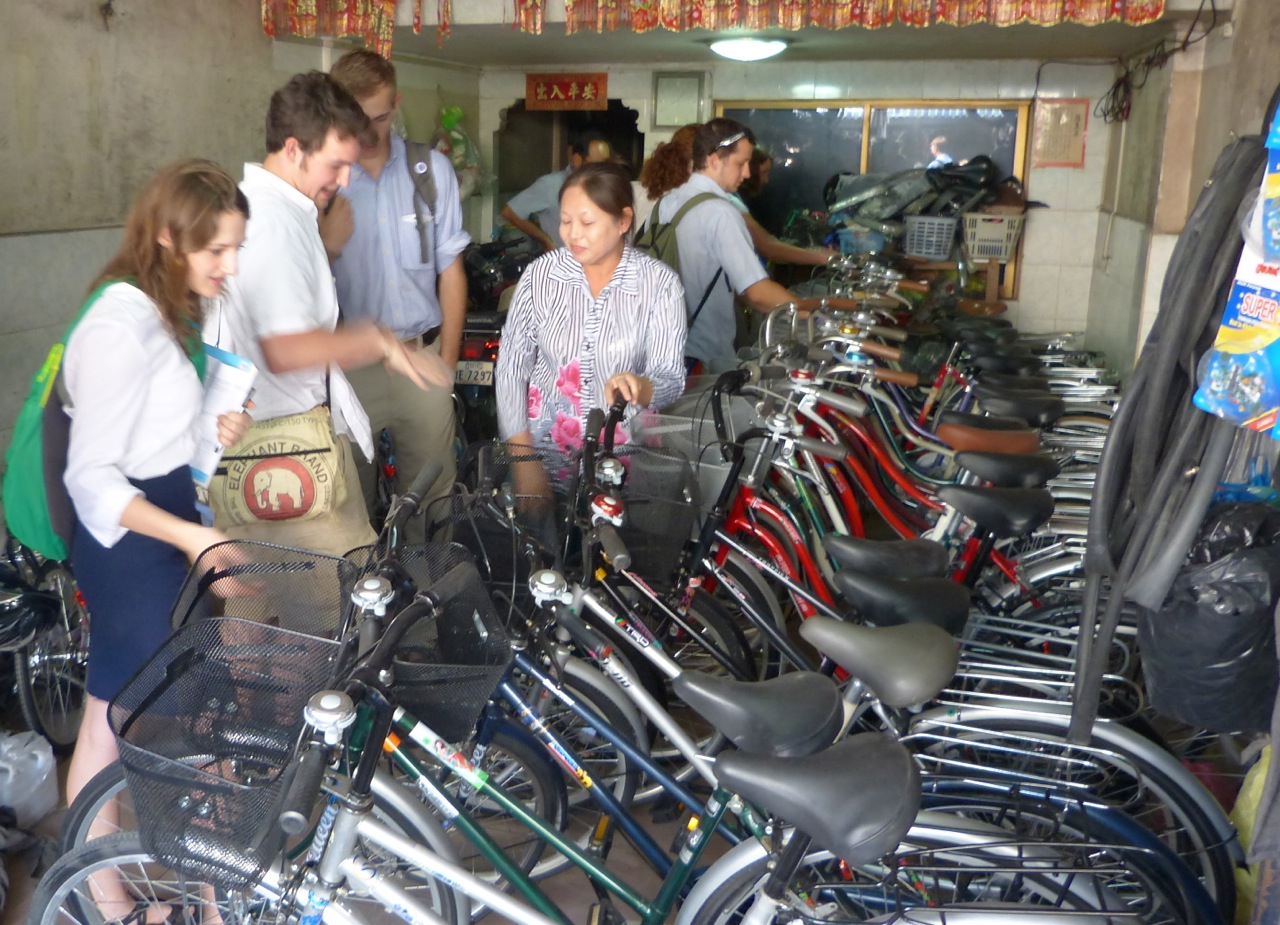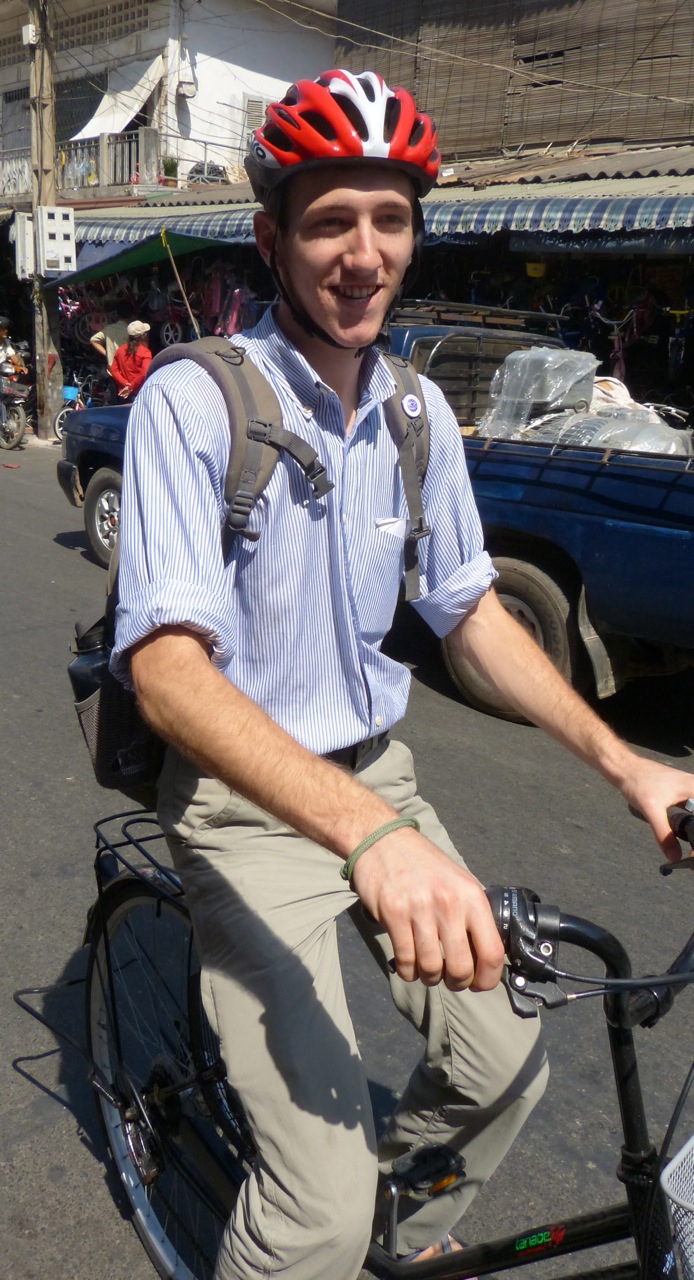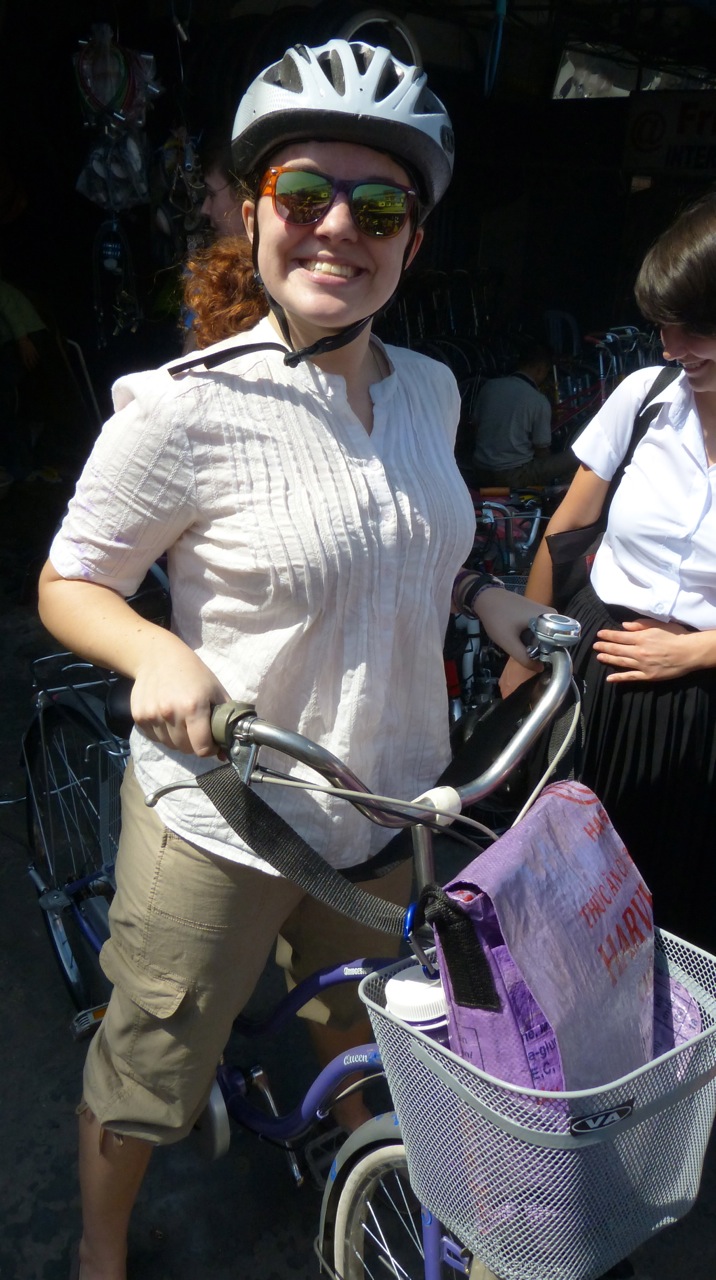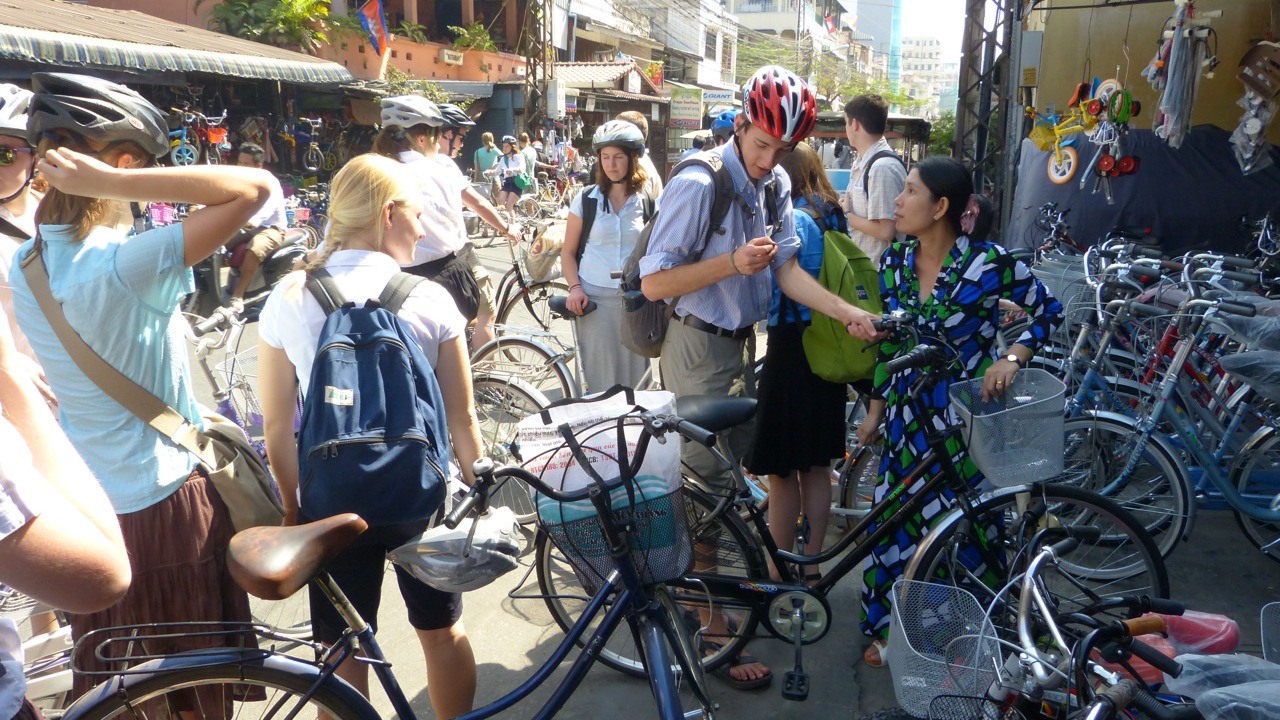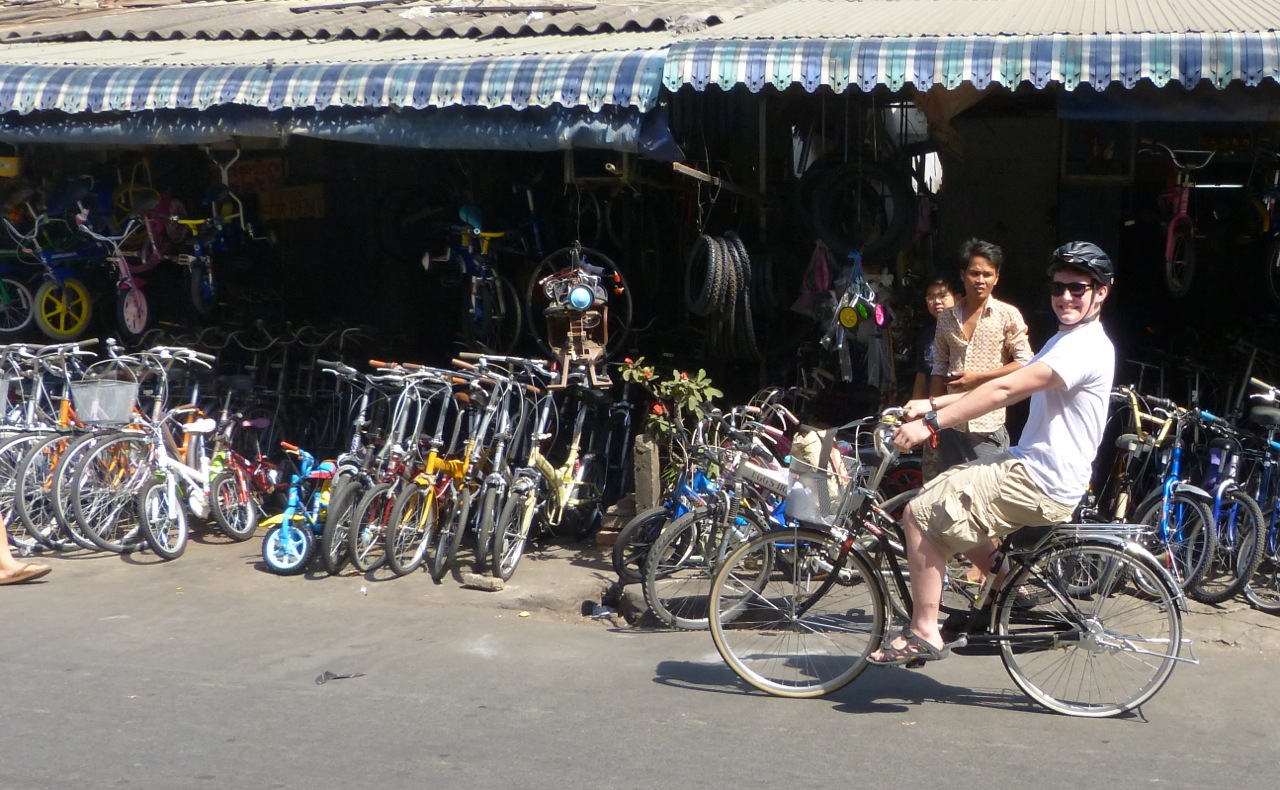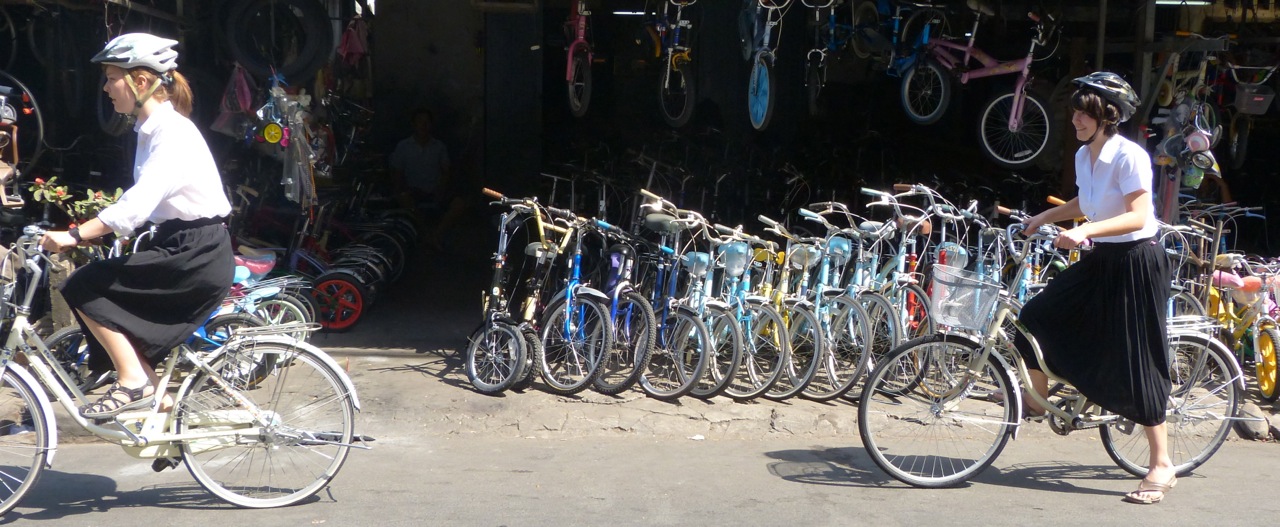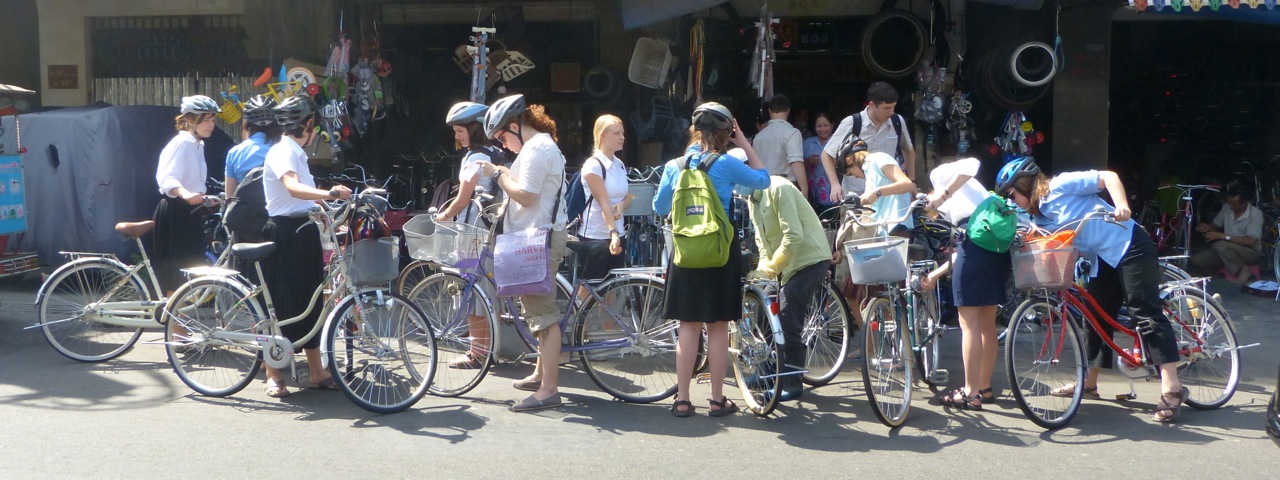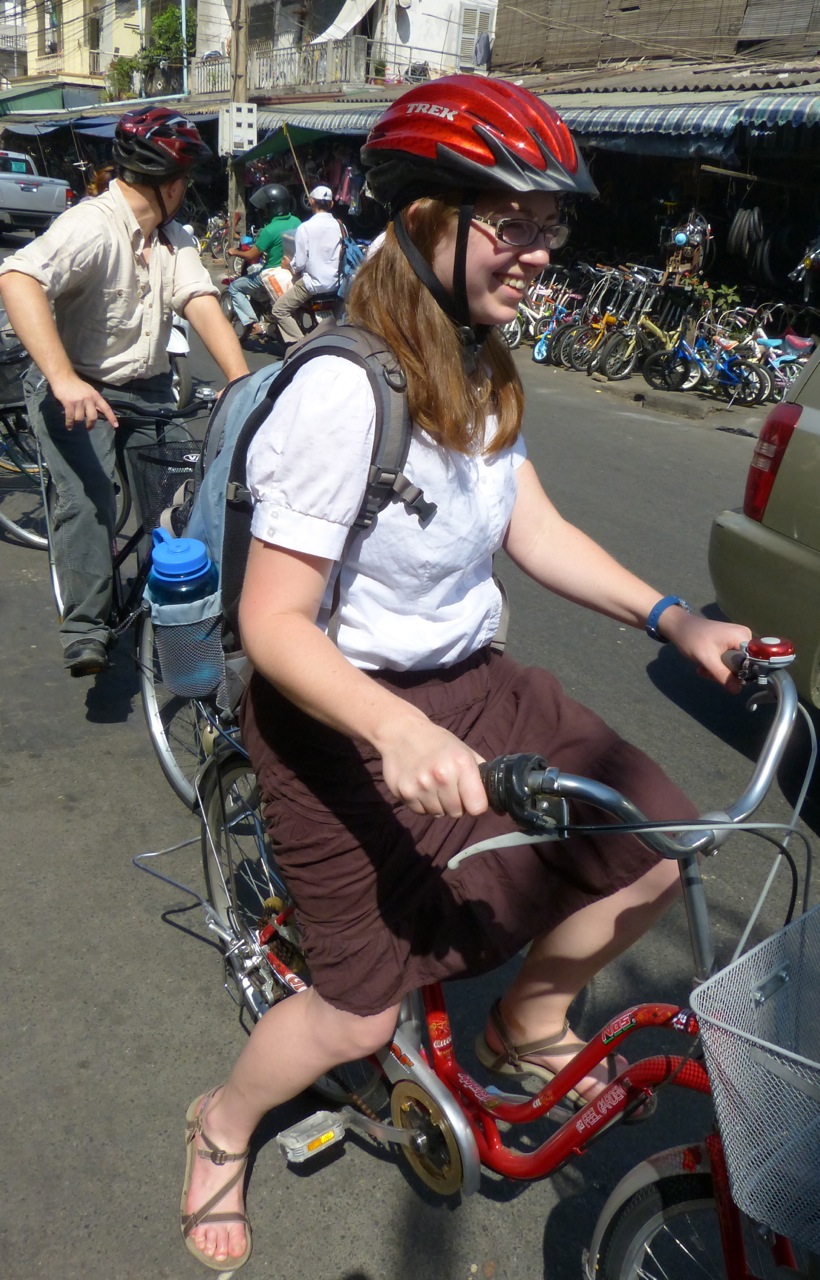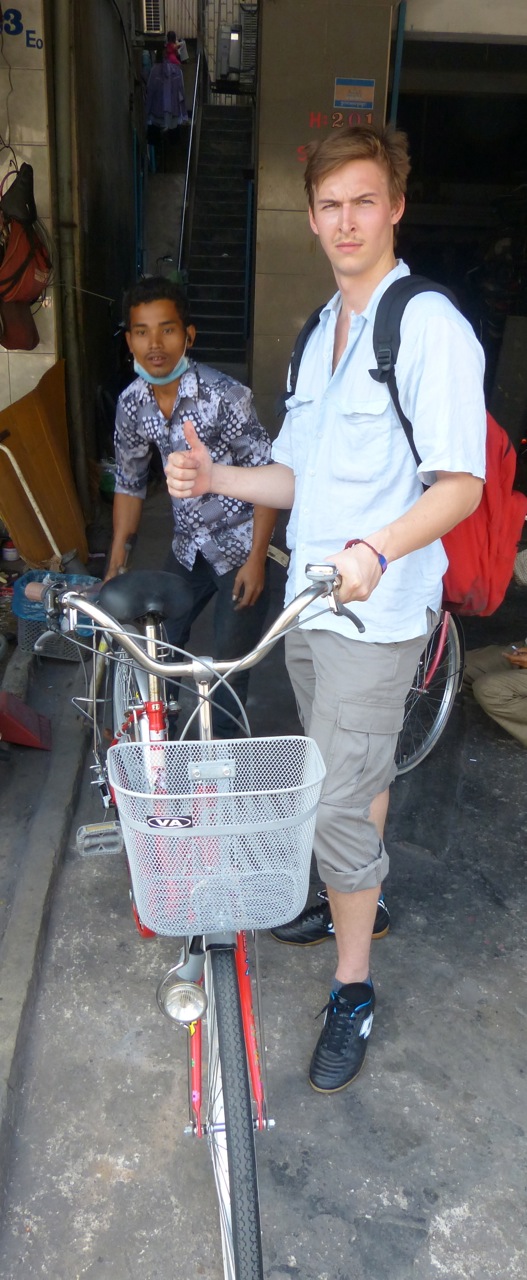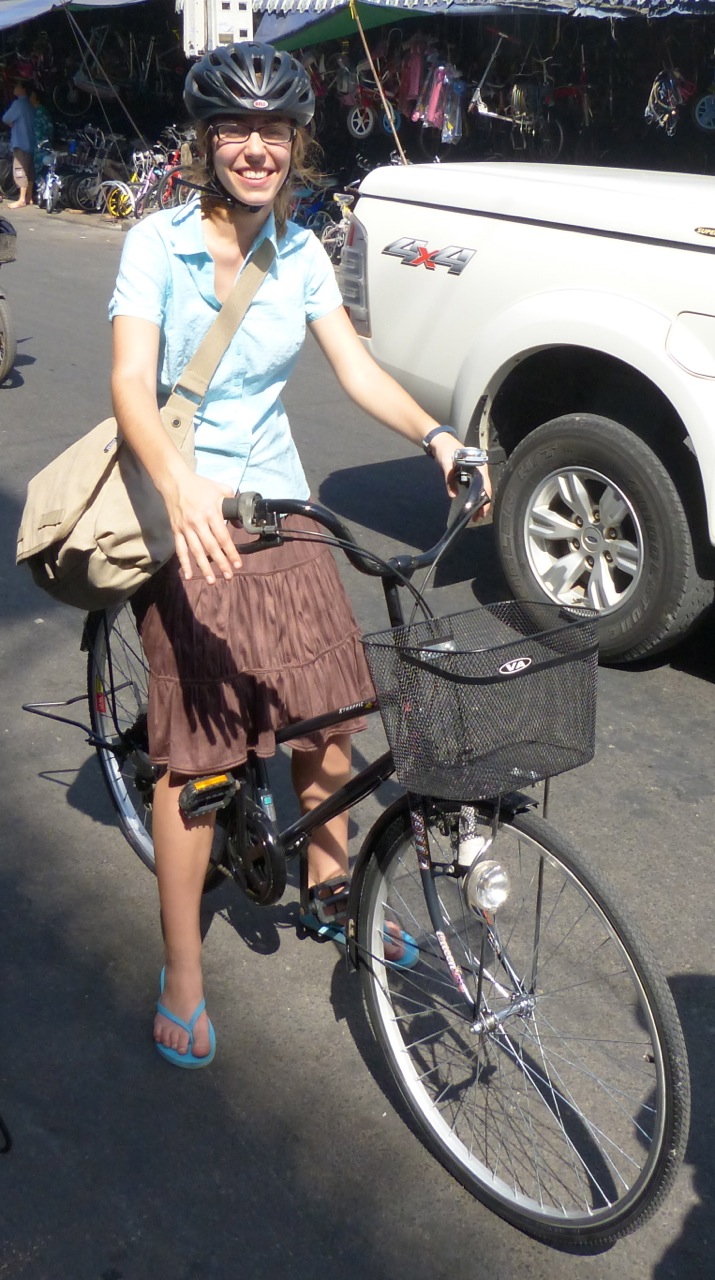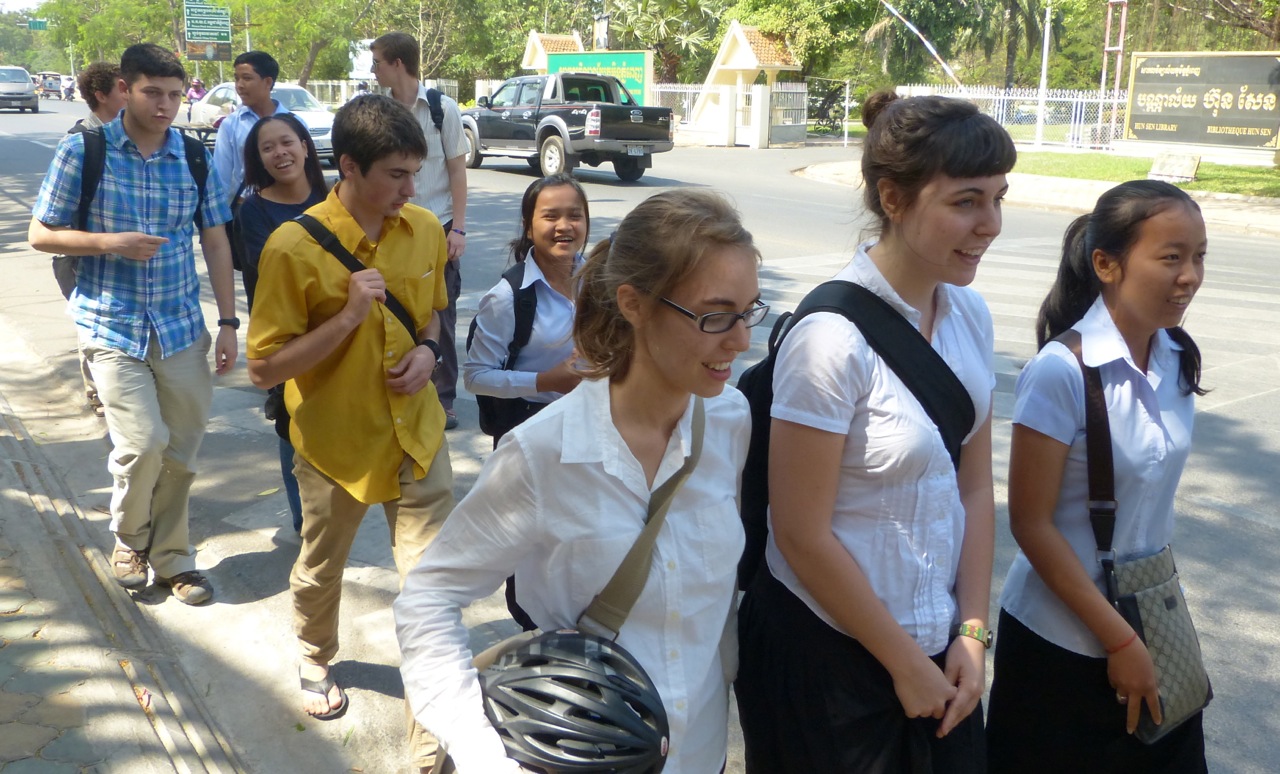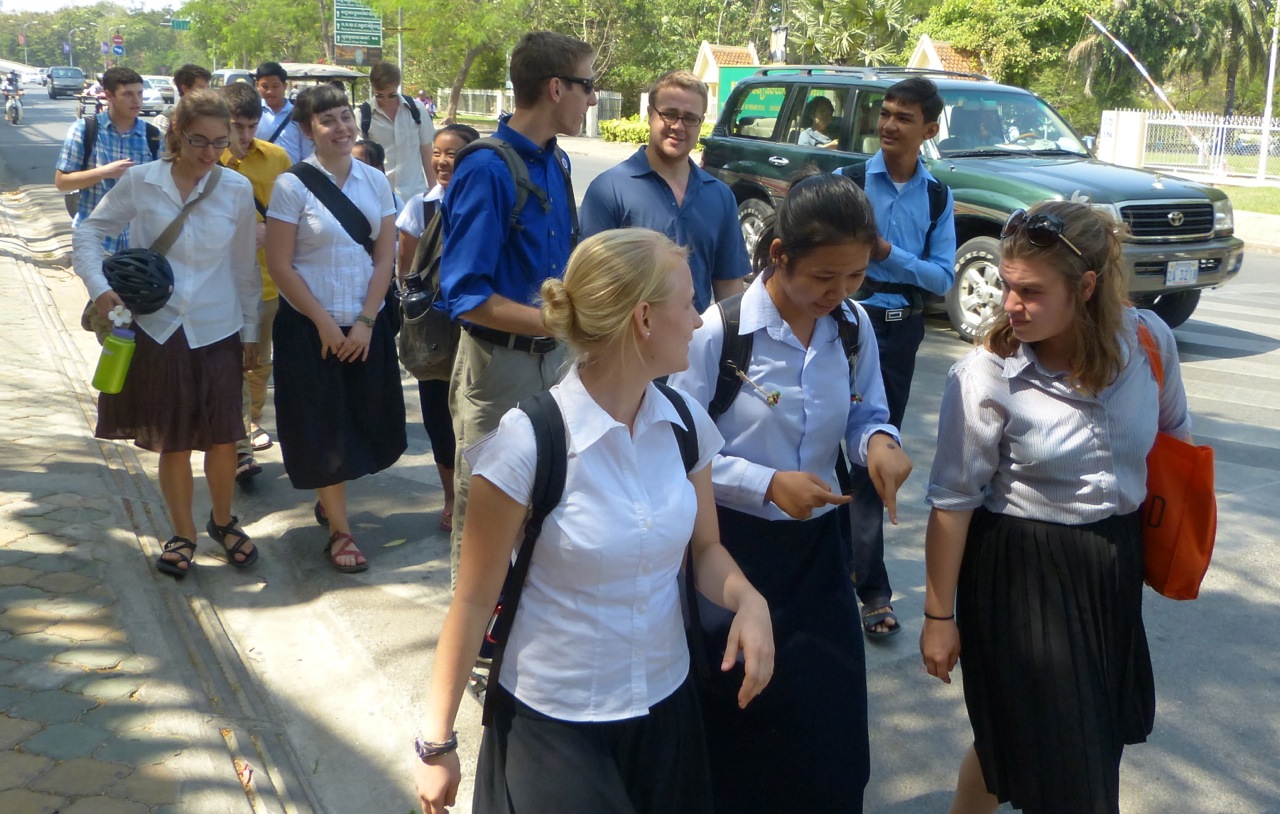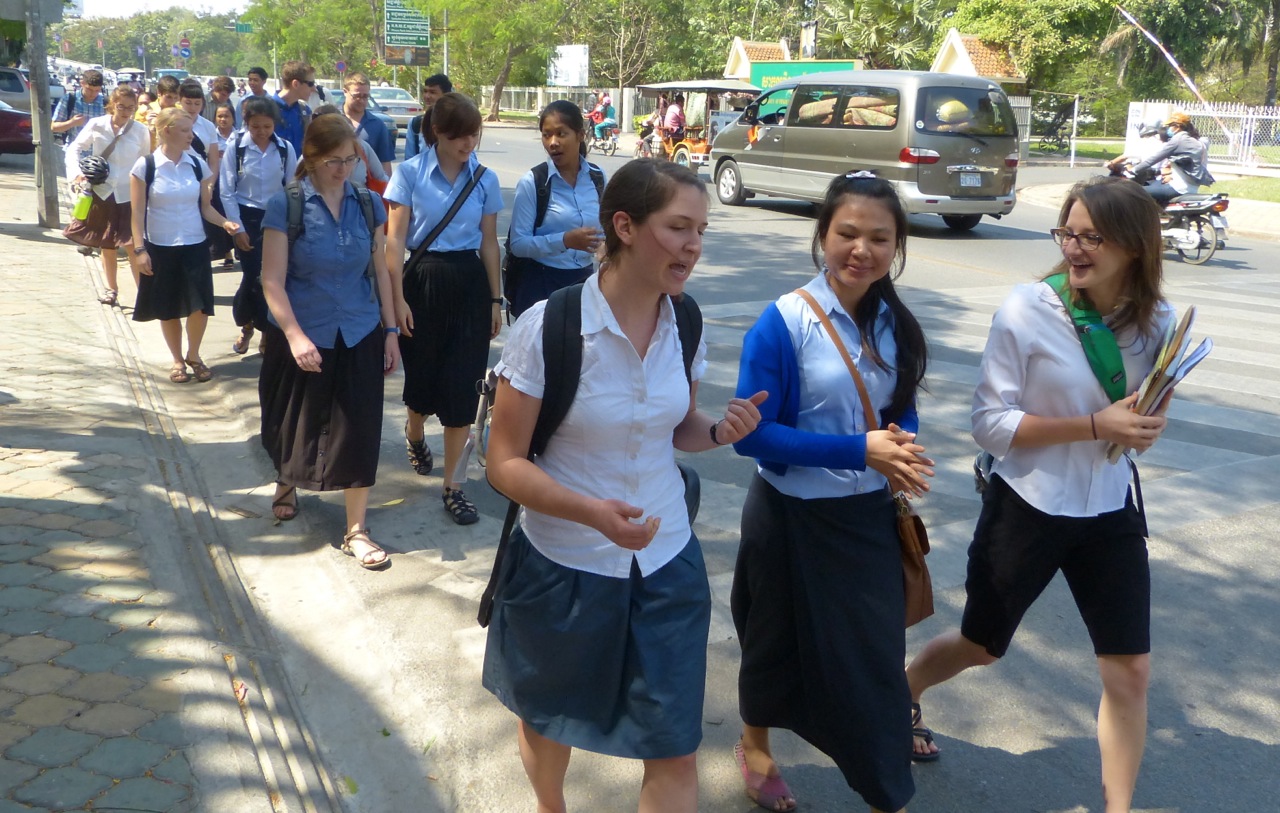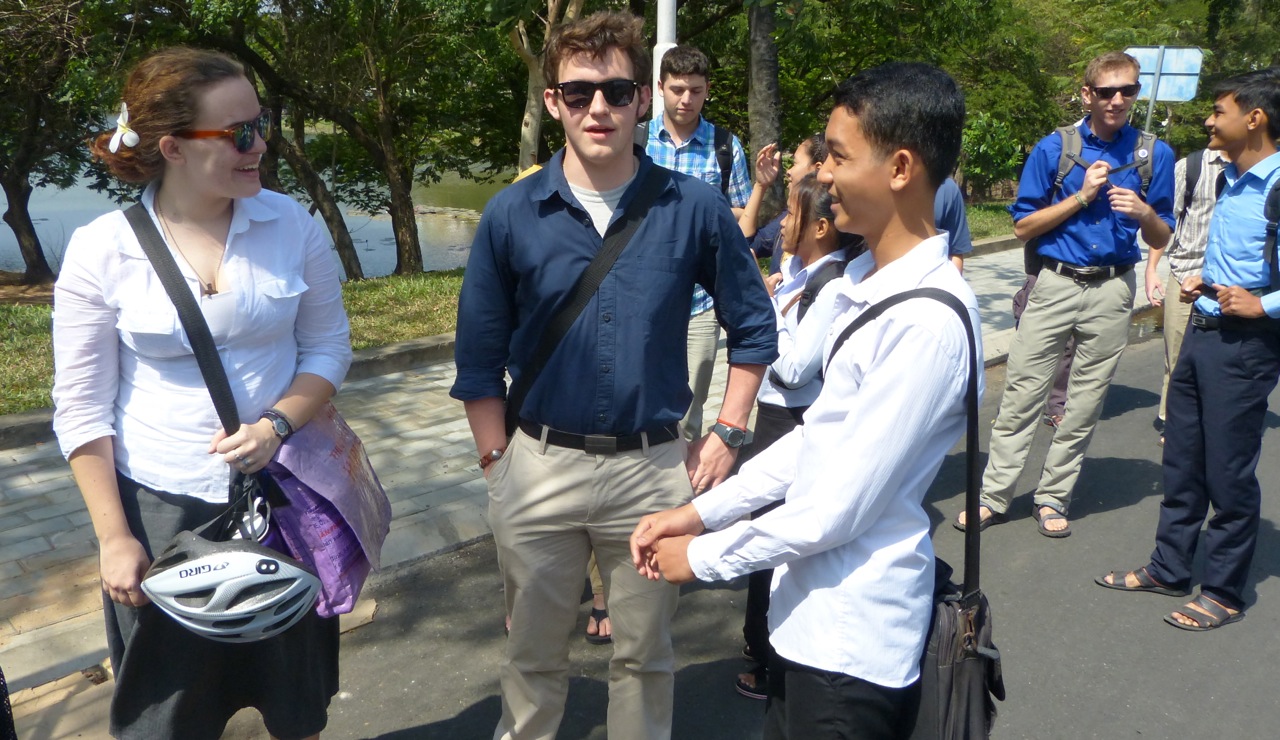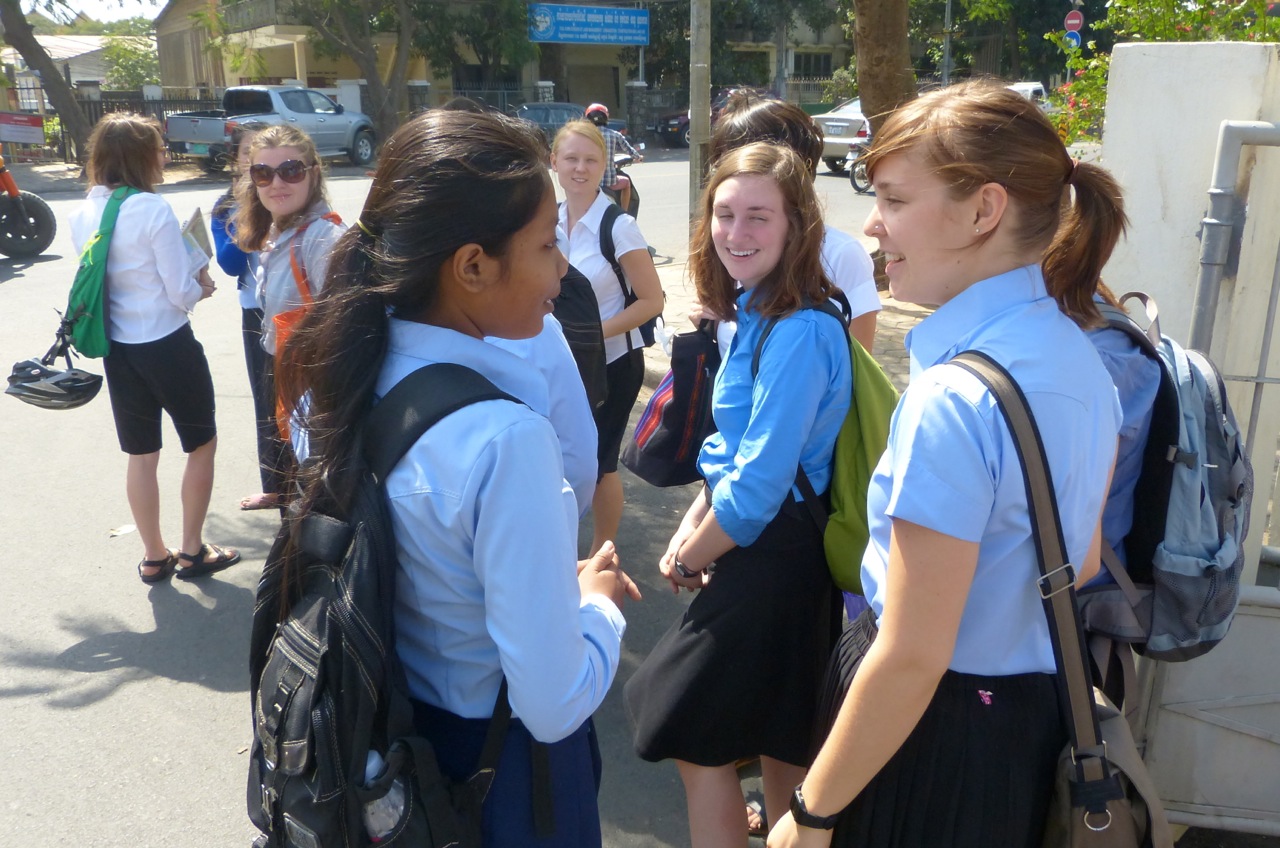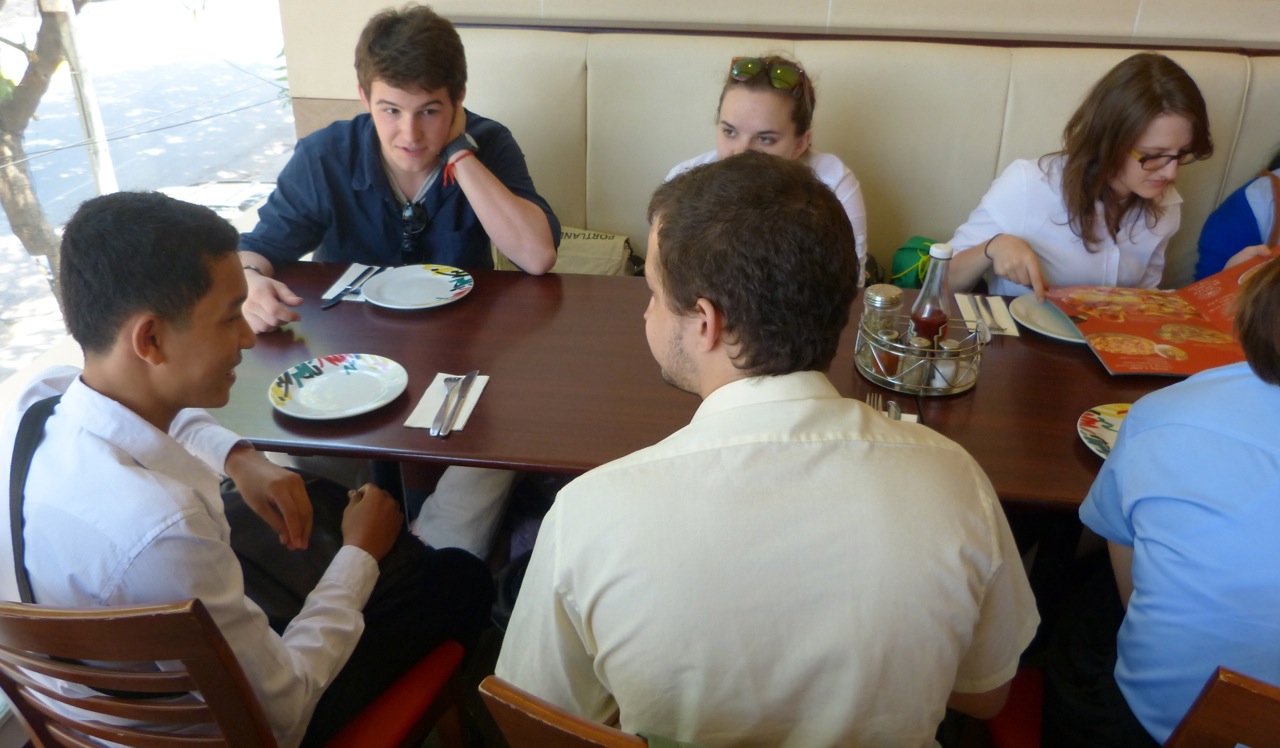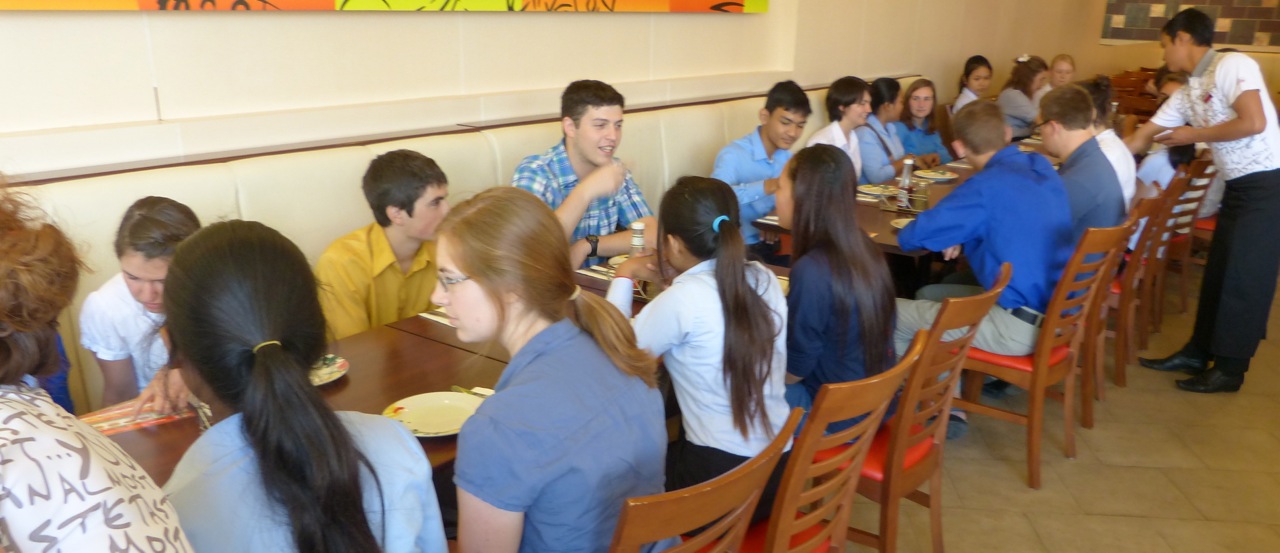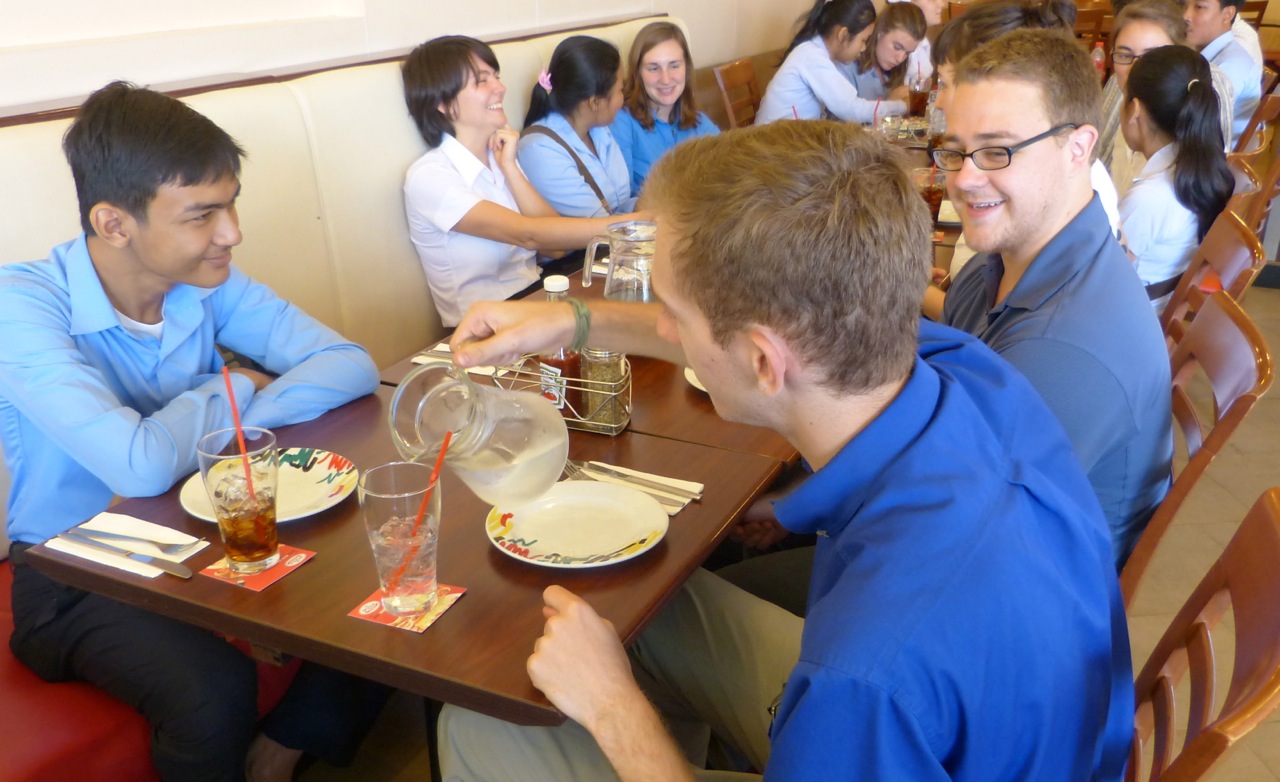Bikes All Around, National Museum, and RUPP Pizza Lunch
This week was full, as always, with a number of lectures, field trips, and transitions. Thursday afternoon we visited Cambodia’s National Museum, which houses artifacts from the last 15 centuries of Cambodian history. Many of the museum’s holdings pre-date the Angkor period, going back to the 6th century or earlier, back when Cambodia’s religion was Brahmanism. The museum, located adjacent to the royal palace, also has a beautiful garden in the center, and students enjoyed feeding the fish there, observing a group of young Buddhist monks exploring the museum, and relaxing by the ponds. The museum is also located directly across the street from King Sihanouk’s funeral pyre. Sihanouk, who declared Cambodia’s independence from the French Protectorate in 1953, has been in and out of power since that time, and was the most revered figure in 20th-century Cambodian history. The king died in October, and his cremation is scheduled for the first week of February, so a block-large pyre and viewing area are being constructed, with workers laboring 24 hours a day.
On Thursday afternoon we also purchased bikes from a shop owned by local assistant Sen Marya’s brother-in-law’s family. Students all received brand-new bikes, some with gears and some without, along with bike locks, baskets, and lights. Students are loving riding around the city on their bikes, navigating traffic and exploring on their own. It’s always been Keith’s preferred method for exploring the city, too. Students had about a week to learn to know the complex but free-flowing traffic patterns, and all seemed ready to venture out on their own. For most trips, they’ll use their bicycles instead of tuk-tuks and motos.
Friday afternoon SSTers had lunch with 10 Royal University of Phnom Penh students — all first-year English students. Since we share the campus with these Cambodian students, many of them from out in the provinces, we wanted students to have the opportunity to interact. We paired off and walked together to the Pizza Company, and then had pizza, including several with seafood, before heading off to the afternoon’s lectures.
Friday afternoon included two lectures, one by Lam Socheat of Building Capacity for Change, about Seeking Good Governance in Cambodia. Socheat spoke about the many grassroots efforts his organization is planning to help those in the provinces understand democratic concepts. The Cambodian-run Non-Governmental Organization also works with members of the Cambodian parliament to work with concepts of representation and giving a voice to the people.
Following Socheat’s lecture, we heard from Father Francois Ponchaud for the second time, this time about Buddhism in Cambodia. Father Ponchaud, a Catholic priest, has deep sympathies for Buddhism and has written a book on similarities between Buddhism and Christianity. He walked us through some of Buddhism’s key concepts, the history of Buddhism in Cambodia, and the reality of Cambodia’s Brahman (Hindu) and animist past. Cambodian religion continues to be a blending of Brahmanism, Buddhism, and animism (seeing spirits in almost all living beings), said Father Ponchaud, even though the country is technically 96 percent Buddhist. Tomorrow (Monday) we’ll do another Buddhist lecture, essentially practicing Buddhist meditation at one of the many wats that dot Phnom Penh.
